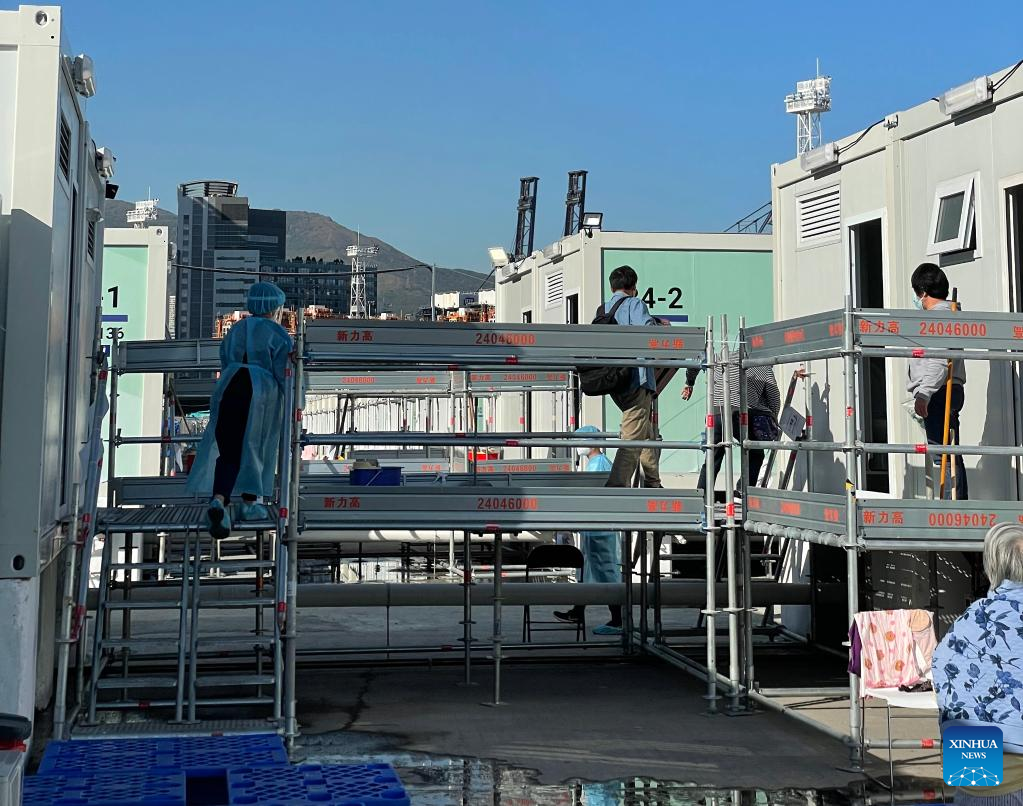
Photo taken with a mobile phone shows a view of a community isolation facility (CIF) in Tsing Yi, south China's Hong Kong, on March 9, 2022. (Xinhua)
Editor's note: China's Hong Kong Special Administrative Region (HKSAR) has been fighting its worst wave of COVID-19 infections since the pandemic began. A mainland-aided, newly built community isolation facility (CIF) located in Tsing Yi started admitting its first batch of COVID-19 patients in Hong Kong on March 3. The facility, completed within just one week, is capable of accommodating about 3,900 asymptomatic or mildly ill patients.
A resident in Hong Kong hospitalized at the facility presents the first-person experience of how he -- along with his new neighbors -- feels at the facility.
HONG KONG, March 9 (Xinhua) -- I became a confirmed COVID-19 patient on March 8. As I had already taken three shots of COVID-19 vaccines, the infection did come as a surprise to me. But I must say that the vaccines had done a great job as I had basically no symptoms.
After triple tests produced all positive results, I was qualified for being admitted to the mobile cabin COVID-19 hospital. Not long after I called the special service hotline of the Fire Services Department, a vehicle picked me up as the only passenger to the Tsing Yi facility located near the Kwai Chung pier.
I checked in at 7:00 p.m. on Tuesday and got a hot meal served by the facility. The room, about 20 square meters, is equipped with brand new bedding, toiletries, three large bottles of mineral water per person, a small desk lamp, and toilet paper.
Later I realized I had left home in such a hurry that I forgot to bring with me some of the daily necessities. Fortunately, I received a call from Tsing Yi staff asking me what I needed, and the plastic slippers and paper cups I asked for were delivered early Wednesday morning. I also learned a 24-hour response service is available for the patients.
The Tsing Yi CIF was built with the aid of a mainland construction company. It has a total of nearly 1,300 isolation rooms and a capacity of about 3,900 isolation beds. The compound of white cabins is divided into large areas marked by A, B, and C, with smaller units identified like A1 and B2.
Each small unit has about a dozen rooms, just like a small neighborhood. For me, the layout is also reminiscent of the tube-shaped university dormitory buildings in the 1990s in the mainland, with shared shower rooms and toilets.
Tuesday night, the public shower room in our zone had some drainage problems, creating a small area of waterlogging outside, and the dwellers walked on their tiptoes to navigate. Hospital staff soon covered the flooded ground with plastic boards and began working to get rid of the water. On Wednesday morning, the ground was almost dry.
The patients in my unit are mostly local residents. There are also some new arrivals from the mainland like me, and there is one family of an ethnic minority. Well, all people are equal before the virus.
After breakfast and lunch, everyone put on their masks and went outside to the open space. Different from Hong Kong people's daily greetings, people in Tsing Yi begin with "Have you (self) tested today? Is it negative yet?"
I saw people listening to songs with their cell phone speakers on, or shooting the breeze with family and friends via video calls. A few kids were playing with foldable lamps, and they told me they were acting as lightsaber-wielding Star Wars movie characters. One thing has seemed clear to me: the dwellers here would act as anything but a patient.
We are willing to live here to avoid cross-infection in the community, and we want to help ease the pressure on Hong Kong's medical system. And all these were done in the form of having a special period of leisure. ■
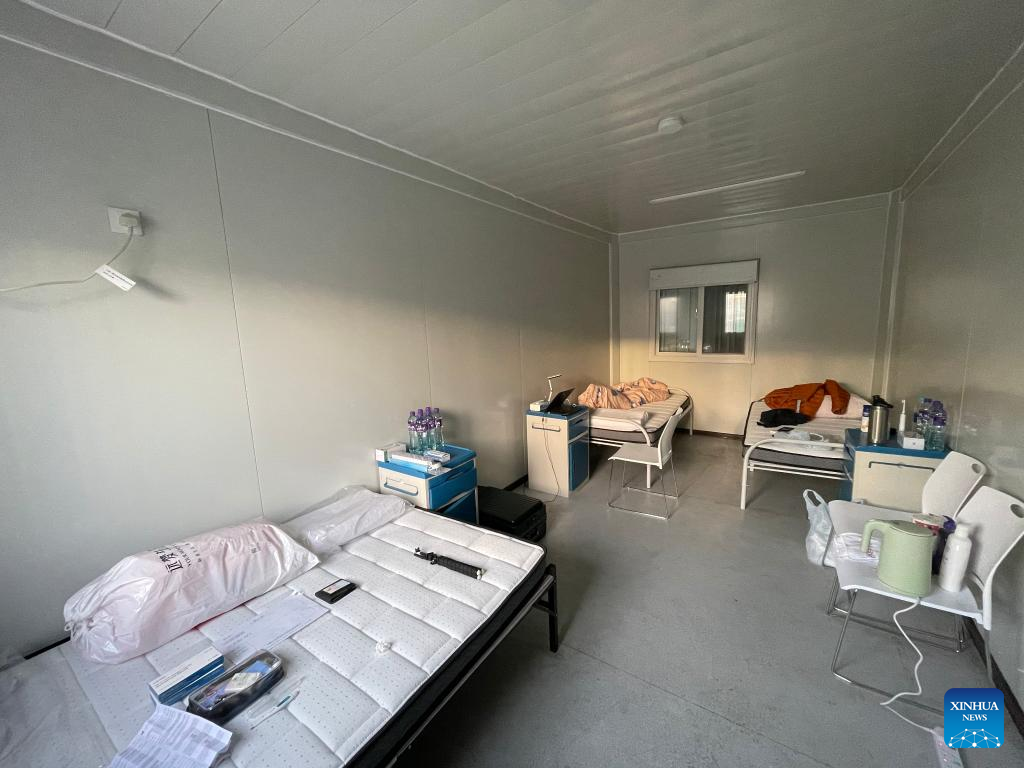
Photo taken with a mobile phone shows an isolation room of a community isolation facility (CIF) in Tsing Yi, south China's Hong Kong, on March 9, 2022. (Xinhua)
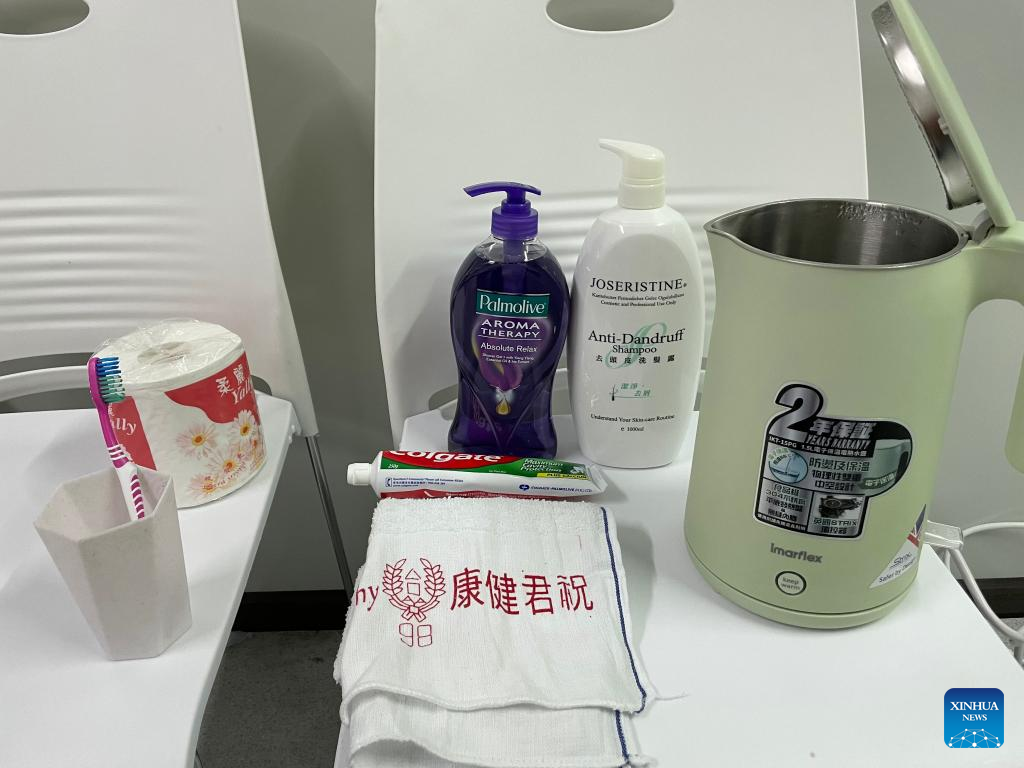
Photo taken with a mobile phone shows the toiletries provided to every patient in a community isolation facility (CIF) in Tsing Yi, south China's Hong Kong, on March 9, 2022. (Xinhua)
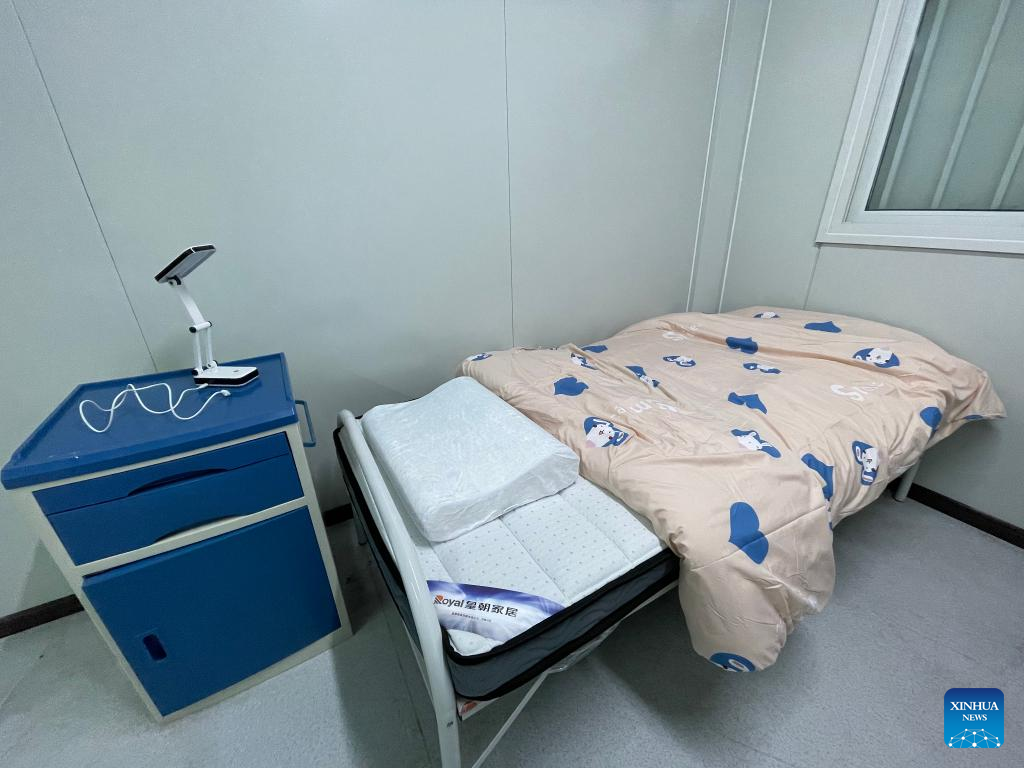
Photo taken with a mobile phone shows an isolation room of a community isolation facility (CIF) in Tsing Yi, south China's Hong Kong, on March 9, 2022. The room is equipped with brand new bedding, a bedside table, a small desk lamp, etc. (Xinhua)
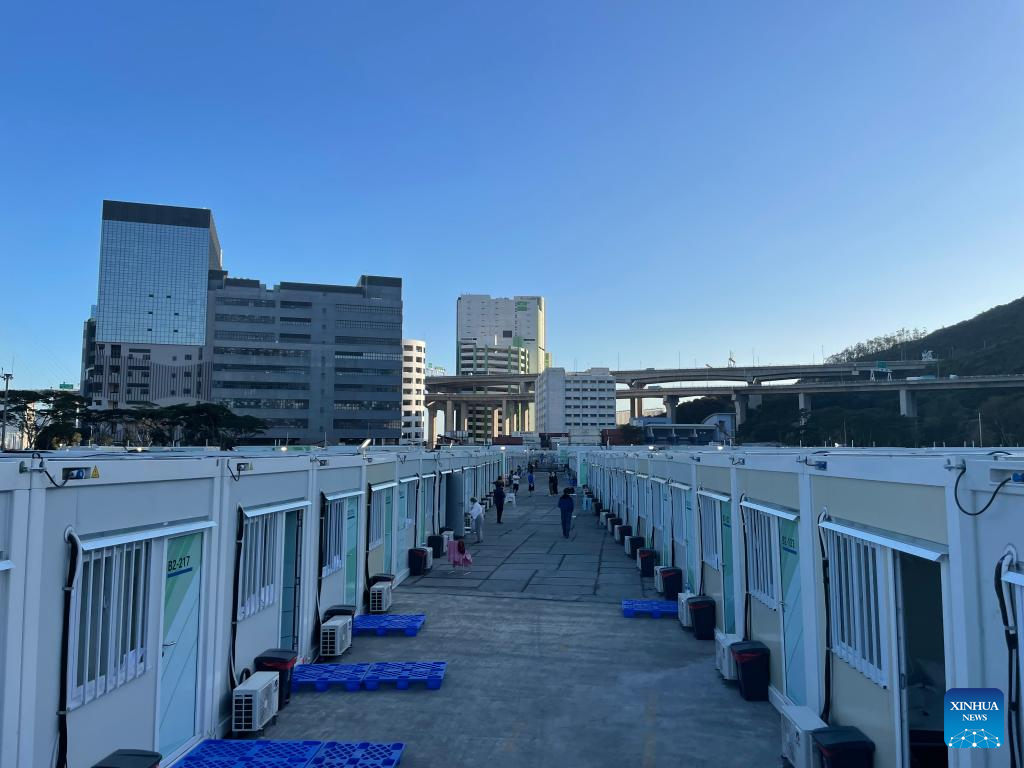
Photo taken with a mobile phone shows a view of the B2 unit of a community isolation facility (CIF) in Tsing Yi, south China's Hong Kong, on March 9, 2022. (Xinhua)
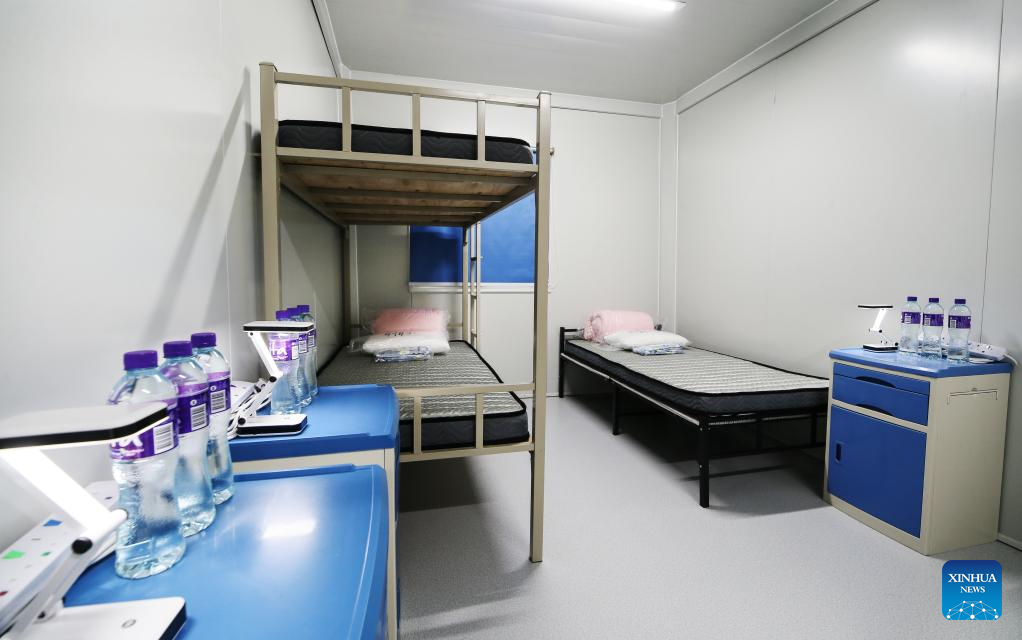
Photo taken on March 8, 2022 shows an isolation room of a community isolation facility (CIF) in San Tin Tsuen Road, Yuen Long, south China's Hong Kong. The second community isolation facility (CIF) in Hong Kong constructed with the support from the mainland will start operation after it was handed over to the Hong Kong Special Administrative Region (HKSAR) government on Wednesday. (Xinhua)
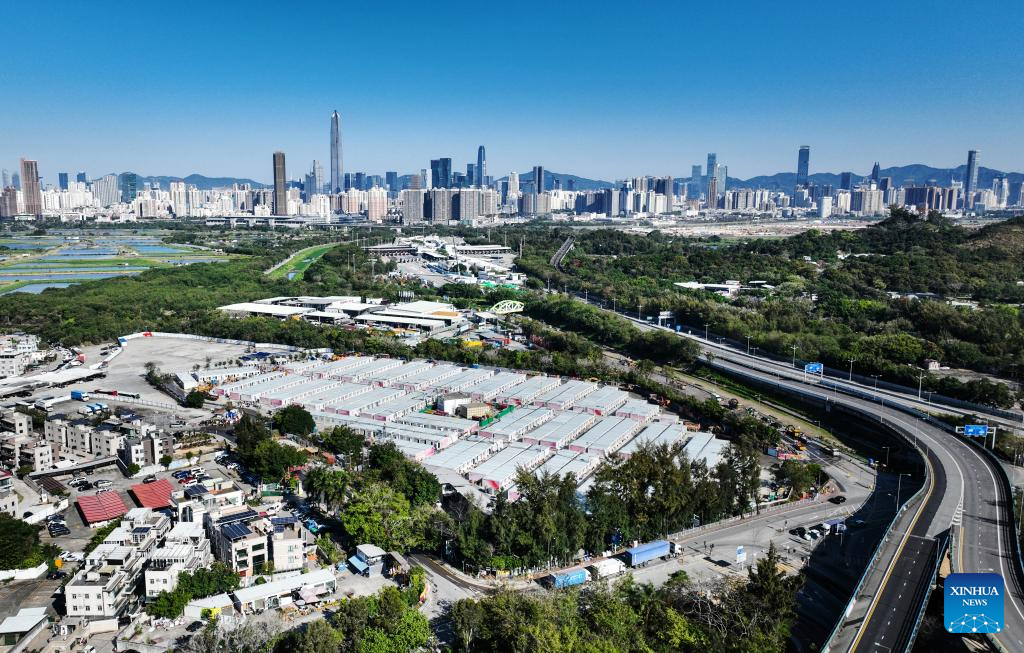
Aerial photo taken on March 8, 2022 shows a community isolation facility (CIF) in San Tin Tsuen Road, Yuen Long, south China's Hong Kong. The second community isolation facility (CIF) in Hong Kong constructed with the support from the mainland will start operation after it was handed over to the Hong Kong Special Administrative Region (HKSAR) government on Wednesday. (Xinhua)
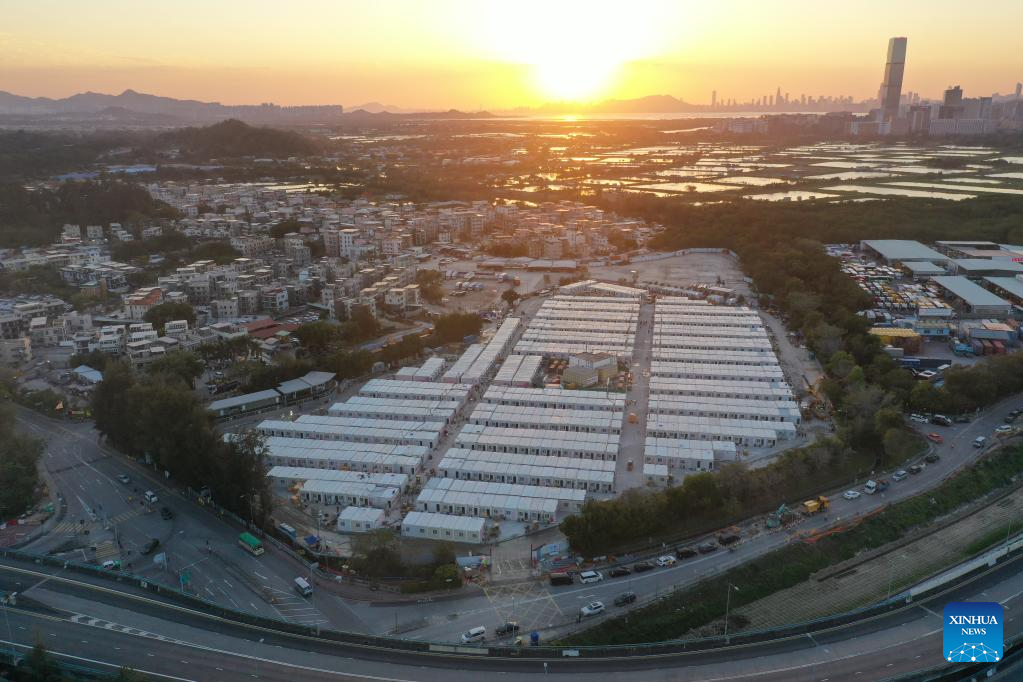
Aerial photo taken on March 7, 2022 shows a community isolation facility (CIF) in San Tin Tsuen Road, Yuen Long, south China's Hong Kong. The second community isolation facility (CIF) in Hong Kong constructed with the support from the mainland will start operation after it was handed over to the Hong Kong Special Administrative Region (HKSAR) government on Wednesday. (Xinhua)



